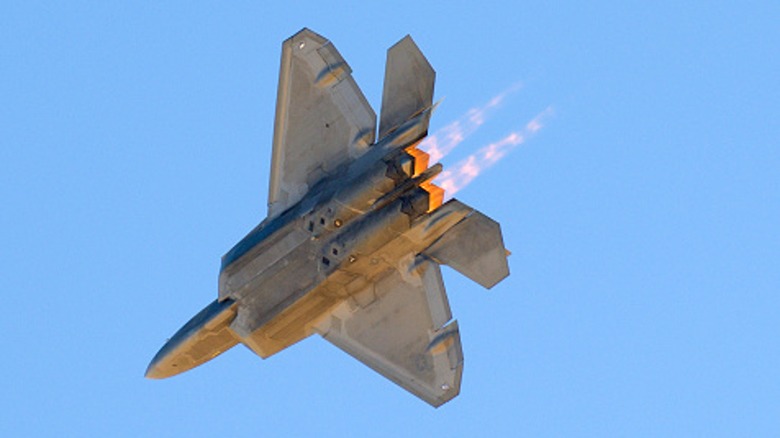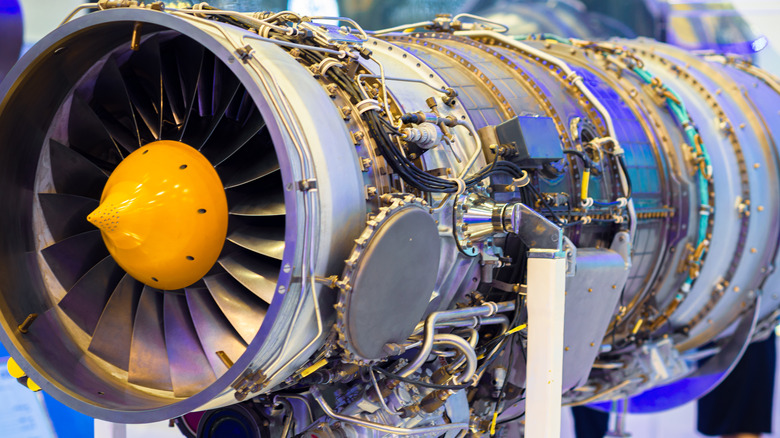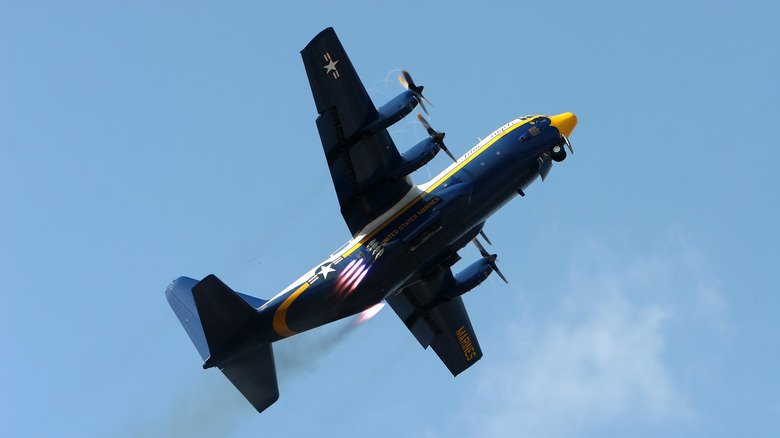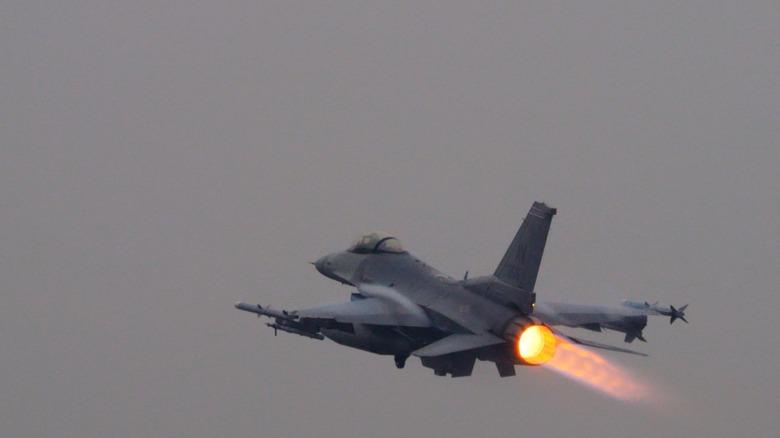
Mike Cassidy/Getty Images
By Brad Hill/
Watching a fighter jet take off is a beautiful sight. Anyone who hasn’t been to an air show should really try to see one of the incredible air shows that captivate aviation enthusiasts worldwide at least once. Once you get past the roaring crescendo of its engines revving up, seeing a fighter jet race down the runway before lifting off the ground and soaring through the sky with a trail of fire erupting from its tail is a truly enlightening sight. It shows you just how far technology has advanced since the Wright Brothers.
Take away the incredible features in modern fighter jets like the hidden weaponry and science behind stealth capabilities and you’re still left with a vehicle capable of amazing feats unimaginable more than half a century ago. The afterburner that gets the jet off the ground and up to sound breaking speeds alone is a technological marvel. Most people take it for granted, not realizing the science that goes into moving a jet at supersonic speeds.
A plane can get off the ground without an afterburner — passenger planes do it all the time. But modern-day fighter jets would be hard pressed to take off without an afterburner. Fighter jets are considerably heavier than prop planes from World War II between the materials used to manufacture them and their armament. They need to stay small and fast, so even the engines on a Boeing 747 wouldn’t work. The afterburner gives jets that little extra boost to takeoff.
How afterburners work

Dizfoto/Getty Images
Afterburners are used on modern day fighter jets to help give them enough thrust to takeoff , specifically on an aircraft carrier, as well as to fly faster than the speed of sound when they need to get somewhere quick. When the pilot engages the afterburner, it creates a reaction that erupts enough force to propel the jet forward. The fuel (usually kerosene) enters the engine through hundreds of tiny holes and is combined with the air already being sucked in. A device that creates an electric spark ignites the fuel, forcing it to expand the oxygen in the air stream. The heat generated from the air and fuel shoots out of the exhaust, creating the pilot’s desired thrust.
The engine is designed in such a way that the flames from the exploding fuel don’t touch its walls, otherwise it could burn through and damage it. 3,000 degrees Fahrenheit has no problem tearing through most materials. Luckily, the air is colder at higher altitudes, which adds a layer of protection.
When the afterburner isn’t engaged and the jet is flying at cruising speed, the engine acts as a typical turbojet. It might add an extra 50% of thrust, but pilots have to use the afterburner sparingly or risk running out of fuel too fast.
Non-fighter jets that use afterburners

Michael Hare/Shutterstock
Typically, it’s only fighter jets that utilize afterburners since few other aircrafts fly at supersonic speeds. Not only are there a couple non-fighter jets that make use of afterburners, there’s one propellor plane that uses them too. That plane is called Fat Albert. It’s the modified C-130T Hercules that follows around the elite Blue Angels demonstration team. Unlike most planes equipped with afterburners that use them to fly at blazing speeds, Fat Albert uses them for takeoff only. The fancy-looking cargo plane is primarily used to haul crew, tools, and support equipment for the team’s F/A-18 Hornets, but it does its own little performance during air shows. A C-130 that uses jet-assisted take-off (JATO) rockets is quite the sight for most crowds.
The Concorde is another aircraft that made use of afterburners even though it wasn’t a fighter jet. The Concorde was a one-of-a-kind supersonic passenger plane that flew Mach 2.04, or 1,354 mph, bringing travelers from New York to London in just under three hours time. By comparison, it takes the average passenger airline around seven hours to make the same flight today. Unfortunately, after a Concorde flight crashed in 2000, the airline retired the plane in 2003, putting an end to supersonic flights for civilians.
Since the Navy retired the C-130T in 2019 and upgraded Fat Albert to a C-130J in 2021, a version of the plane without its JATO rockets, there is no longer an aircraft with afterburners that isn’t a fighter jet.
The future of afterburners

Flight Video and Photo/Shutterstock
Afterburners are an essential piece of fighter jets and will continue to be used well into the 21st century. However, they’re not without their drawbacks. Stealth has become a vital component for fighter jets. Getting in and out of enemy territory without being detected is an invaluable feature that can’t be understated. Unfortunately, when pilots engage the afterburner, they’re exposed to radar waves and infrared detection devices. Newer jets like the F-22 Raptor can cruise faster than the speed of sound without engaging the afterburner, which is helpful but not perfect. As of now, there’s no way to hide the immense heat erupting from the rear of a plane.
Besides stealth, jets always have a need to go faster, farther, and use less fuel. Small start-ups like Destinus are developing hydrogen-powered afterburners that can aid in those endeavors. Its afterburner is only capable of reaching roughly 150 mph, a far cry from its supersonic and eventual hypersonic goal. If Destinus manages to create a hydrogen-powered afterburner at the very least keep pace with their kerosene-power counterparts, it’s only a matter of time before militaries around the world integrate that technology into their fighter jets.